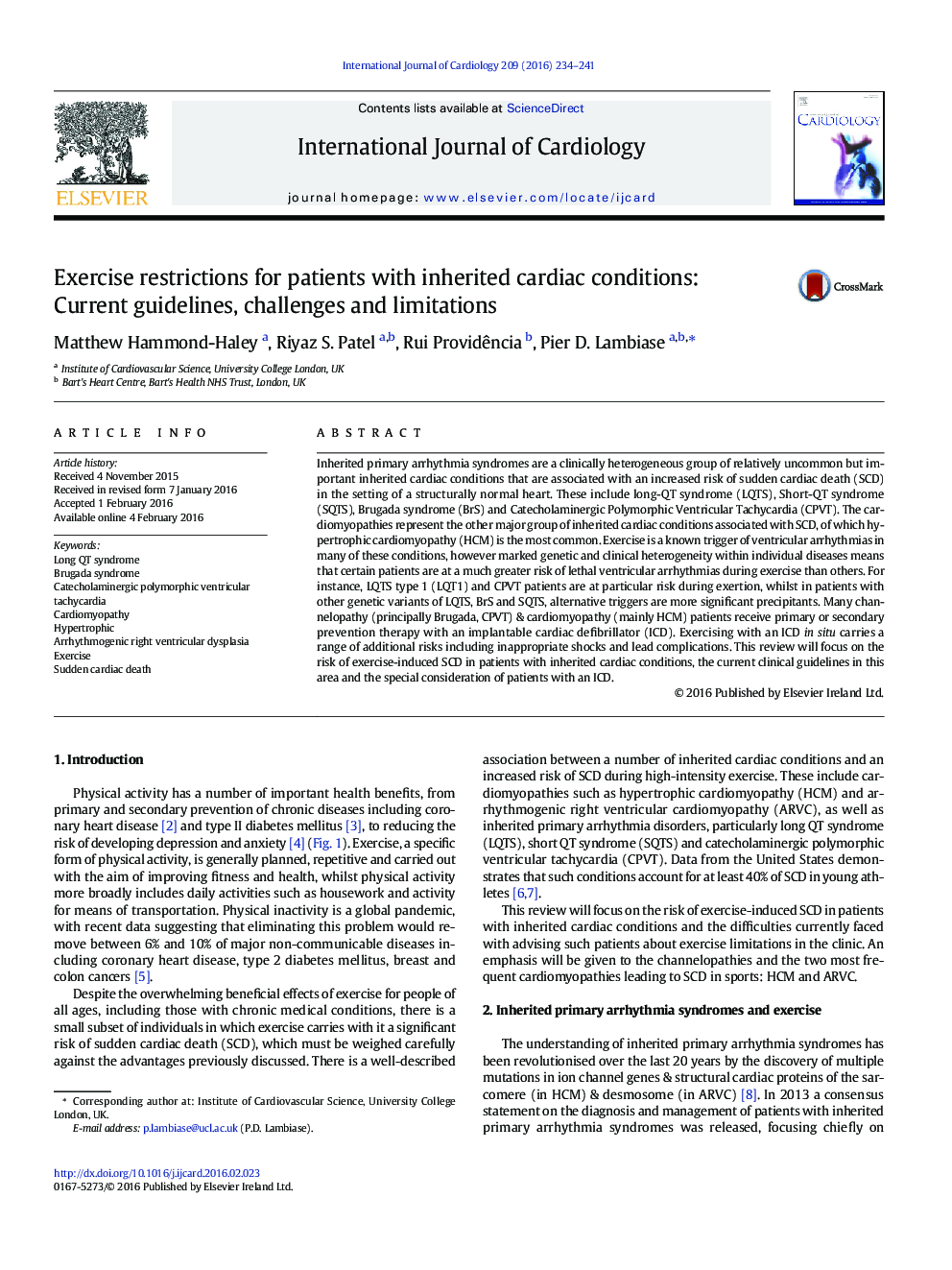| کد مقاله | کد نشریه | سال انتشار | مقاله انگلیسی | نسخه تمام متن |
|---|---|---|---|---|
| 5965091 | 1576141 | 2016 | 8 صفحه PDF | دانلود رایگان |
- Exercise is a trigger of sudden cardiac death in patients with LQTS, CPVT and Cardiomyopathies (particularly HCM and ARVC)
- Clinicians weigh the benefits of exercise with the risk of SCD in such patients
- Contradictions exist between the European and American recommendations
- Understanding of these conditions has advanced since the guidelines were published
- This makes risk stratification challenging and updated AHA/ACC guidelines shed further light on these issues
Inherited primary arrhythmia syndromes are a clinically heterogeneous group of relatively uncommon but important inherited cardiac conditions that are associated with an increased risk of sudden cardiac death (SCD) in the setting of a structurally normal heart. These include long-QT syndrome (LQTS), Short-QT syndrome (SQTS), Brugada syndrome (BrS) and Catecholaminergic Polymorphic Ventricular Tachycardia (CPVT). The cardiomyopathies represent the other major group of inherited cardiac conditions associated with SCD, of which hypertrophic cardiomyopathy (HCM) is the most common. Exercise is a known trigger of ventricular arrhythmias in many of these conditions, however marked genetic and clinical heterogeneity within individual diseases means that certain patients are at a much greater risk of lethal ventricular arrhythmias during exercise than others. For instance, LQTS type 1 (LQT1) and CPVT patients are at particular risk during exertion, whilst in patients with other genetic variants of LQTS, BrS and SQTS, alternative triggers are more significant precipitants. Many channelopathy (principally Brugada, CPVT) & cardiomyopathy (mainly HCM) patients receive primary or secondary prevention therapy with an implantable cardiac defibrillator (ICD). Exercising with an ICD in situ carries a range of additional risks including inappropriate shocks and lead complications. This review will focus on the risk of exercise-induced SCD in patients with inherited cardiac conditions, the current clinical guidelines in this area and the special consideration of patients with an ICD.
Journal: International Journal of Cardiology - Volume 209, 15 April 2016, Pages 234-241
